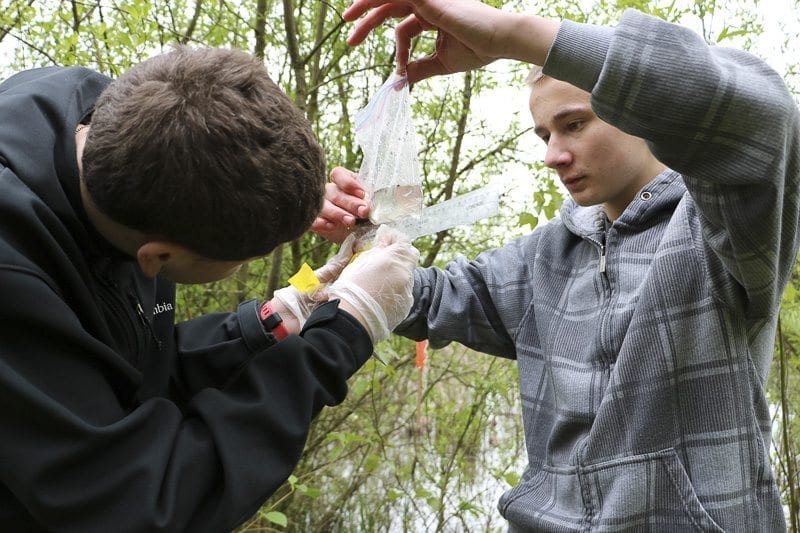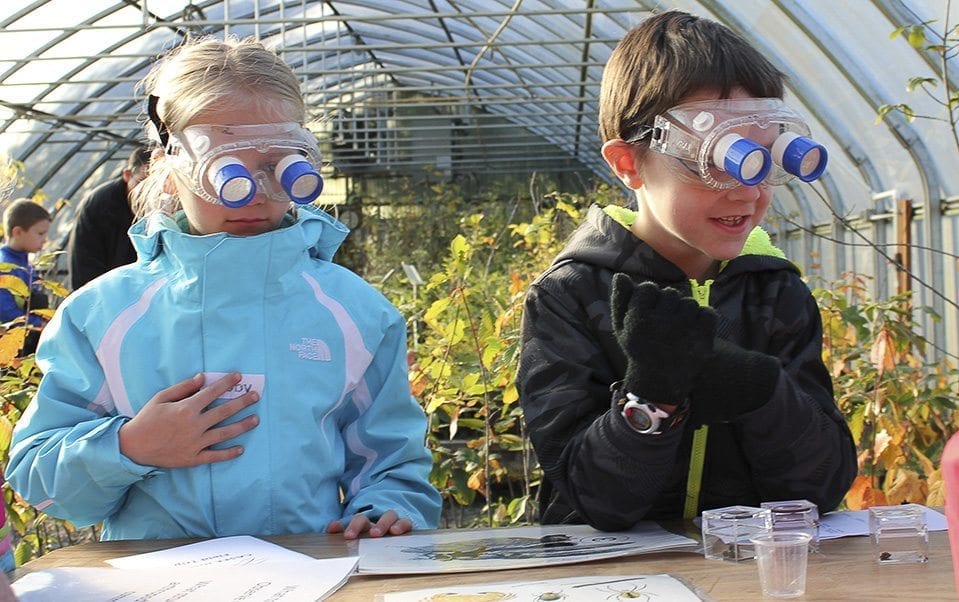May 12 event will feature tours, displays, refreshments and a special presentation looking back at the past and future of the Center for Agriculture, Science and Environment Education program
BATTLE GROUND — The Battle Ground School District is inviting the community to join in celebrating the 25th anniversary of the Center for Agriculture, Science and Environment Education program.

The celebration and open house is scheduled to begin with tours and displays at 1 p.m. Sat., May 12, with a special program beginning at 2 p.m. and light refreshments and campus tours set for 3 p.m.
The event will be held at CASEE, 11104 NE 149th St., Building B, in Brush Prairie.
“CASEE provides a unique learning opportunity for Battle Ground students,” said Career and Technical Education Director Cindy Arnold in a press release. “Small class sizes mean that students have close working relationships with their teachers and peers, and there are so many opportunities to connect with professionals and scientists who work in the fields they’re studying.”
The district this week provided a look back at the history of the sprawling 80-acre campus where students can be found collecting data, performing experiments and conducting research in the outdoor learning laboratory. The site is the home to the half-day science, technology, engineering and mathematics (STEM) program that offers an integrated curriculum in science and English and provides students with a place for field trips and hands-on projects.

Here’s the history of the program as written by the Battle Ground School District:
The CASEE program started in 1993 as a cooperative effort of the district’s Career and Technical Education (CTE) and science programs. Supported by a community advisory group, CASEE was designed to provide students with the skills and knowledge to enter a professional world that increasingly relies on science and technology skills.
Over the last two and a half decades, thousands of students have sharpened their science skills and had their curiosity piqued thanks to the CASEE program. To celebrate CASEE’s 25th Anniversary event on May 12, we’re taking a look at the program’s history, including how the concept was inspired by a trip to Disney World, and how it got its name thanks to a dog.
While CASEE officially launched in the 1990s, the program can trace its inspiration all the way back to 1985, in Disney World, of all places. That year, teacher Tim Hicks presented Battle Ground’s successful agriculture curriculum at a national conference in Florida. At the conference, Hicks and other teachers discussed the future of agriculture programs. They knew the rural landscape was rapidly changing: farms that were once plentiful were being turned into housing developments, yet the worldwide need for food was growing.
Conference participants also were treated to a behind-the-scenes tour of the newly opened EPCOT Center. At the Experimental Prototype Community of Tomorrow, Hicks saw cutting edge ideas: tissue cultures used to develop plant material, Tilapia fish raised as an aquaculture crop, and examples of highly developed composting and recycling schemes.
Inspired and full of enthusiasm, Hicks returned to the Battle Ground School District with a new assignment on his plate. When the district asked teachers to restructure the agriculture department, Hicks told his peers that if they were going to dream, they should dream big.
Hicks and his colleagues had always wished for a place where students could work hands-on with professionals, where there were no bells or 50-minute class periods.
In 1987, steps to develop an outdoor laboratory for BGPS began in earnest. District administrators and teachers collaborated with community consultants from Clark County, Washington State University and the Farmers Home Administration for the project. Together, they envisioned a center for environmental and agriculture agencies that would work to educate students and benefit the entire community.
In February of 1987, the Battle Ground School Board approved the concept and a site on NE 149th Street in Brush Prairie. One year later, BGPS agreed to lease the site from the state Department of Natural Resources. They dubbed it the Salmon Creek Center. Warren Reeves was designated as the director during its development. He saw the need to give the project a name with a catchy acronym. For that he looked no further than Casey, a dog that wandered the campus with its in the early stages of its development. From that point, the program was referred to as the CASEE project, or the Center for Agriculture, Science and Environmental Education.
In 1989, CASEE began to take shape. A summer youth employment program built sheds and picnic tables, constructed nature trails and planted vegetation at the site. That fall marked the first annual pumpkin patch hunt by local kindergartners.
In February of 1990, BGPS announced its intention to build administrative offices at the Salmon Creek Center. The following year saw the implementation of a district-wide CASEE curriculum for K-12 students. Written by the teachers who would be using the site, it included sections on insect study, water analysis, plant classification and tree measurement activities. The goal was that every science-based class would make two visits to CASEE, prompting more than 14,000 student visits that year.
Meanwhile, plans for construction continued to evolve, and the district office moved in during the summer of 1992. Building B opened to the first CASEE classes in the fall of 1993.
Today, the CASEE campus still serves as a hub for science learning for the entire district, as well as the home of the BGPS district offices. More than 110 students attend CASEE on a 3-hour block schedule Monday-Friday before or after attending their home high school for a half day to round out their studies. During their four-years in the CASEE program, students explore courses in Biology, Natural Resources, Environmental Science, Forestry, Wildlife, Chemistry, Food Science, Microbiology, Agricultural and Industrial Biotechnology and four years of English.
Over the past 25 years, CASEE students have made significant improvements to the campus’s infrastructure, including the installation of two and a half miles of trails, an arboretum, ponds, additional structures, and reinventing the garden each year as new students enter the program.
“CASEE’s integrated course structure allows students to spend more time exploring particular topics in-depth,” said science teacher Mark Watrin. “Having the ability to choose a research emphasis creates a work environment closer to what people do in their careers. Professionals in the STEM fields apply their skills to try and solve a central problem. CASEE gets closer to that real work environment than most school classes.”




